Laica Blog
5 simple everyday ways to reduce microplastics
Microplastics are infinitesimally small particles of plastic which, as we have written about many times in articles on this blog, can now be found in the most remote landscapes of the world and in the food on our table, with negative impacts on natural ecosystems and human health.
A study by the Vrije Universiteit Amsterdam in 2022 showed that 77% of people tested had traces of microplastics in their blood. This occurs because the tiny size of the microplastics enables them to enter human bodies and deposit themselves inside our organs. The consequences and potential harmful effects of this contact between human bodies and plastic waste are still being scrutinised by scientific researchers.
But how can we reduce exposure to microplastics and, at the same time, help to protect our planet? In this article, we suggest five simple everyday actions that make the difference and which too often are underestimated and ignored.
1. Use a vacuum sealer
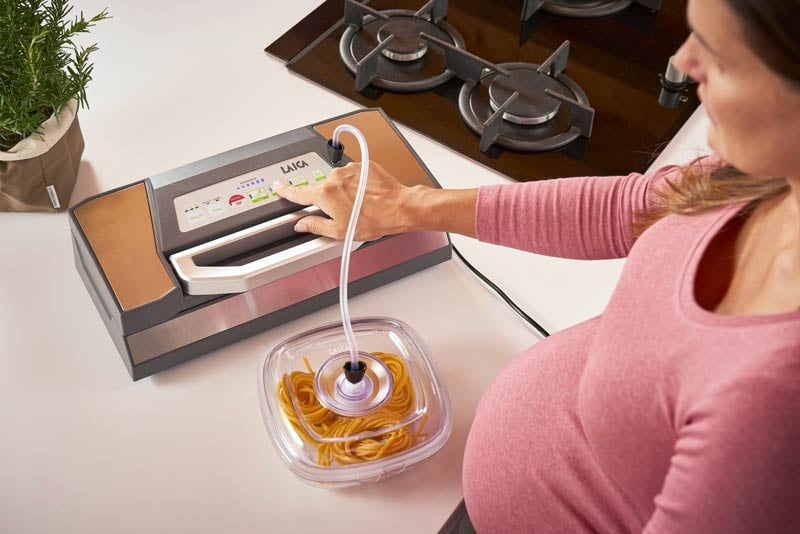
Open your fridge or your food cupboard, do it now! Try to count the number of items of food which you currently have in there stored in single-use plastics. Cling film, wrappers, plastic bags, etc. which will be thrown away when you have finished with them. We can do better.
Adding a vacuum sealer to your kitchen provides, as we have already seen, a number of advantages and is good way of reducing plastic waste. Let’s take a look at how. With smart glass containers, vacuum storage keeps food fresh for longer, helping to reduce food waste and allowing you to better organise your fridge or food cupboard, removing any risks of contamination between different foodstuffs (important for allergies and intolerances) and helping to protect and prolong the authenticity and purity of the flavours, colours, and textures of foodstuffs.
And what about microplastics? They will be dramatically reduced, because the containers are easy to reuse and wash by hand or in the dishwasher.
But the opportunities provided by a vacuum sealer do not end here; have you ever heard people talk of the convenience and high quality of sous-vide cooking?
2. Choose cosmetics and personal hygiene products which are free from microplastics
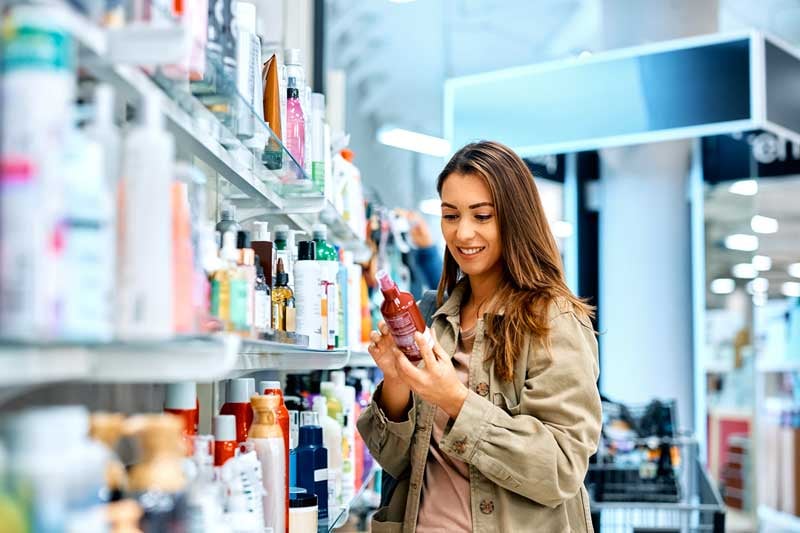
Many cosmetics and personal hygiene products contain microplastics (synthetic polymers) which can sometimes account for a considerable proportion of the total weight of the product, such as with skin exfoliants and toothpastes. These plastic particles are then washed away and end up in waste water, where they are often not filtered in treatment plants and end up being discharged into water courses.
In recent years this has become a hot topic in the cosmetics industry and some governments across the world are leading research studies and weighing up potential regulation of the sector. Today, leading producers of cosmetics and personal hygiene products offer lines which include products which are mindful of this issue, something which is particularly important among young people.
To avoid contributing to this form of pollution, choose cosmetics and hygiene products which are free from microplastics, favouring those which are natural, organic, and certified. In some cases you can prepare your own “beauty products” at home, always ensuring you follow medical advice, using natural ingredients such as sugar, salt, honey, oil, yoghurt, fruit, and vegetables.
3. Filter tap water
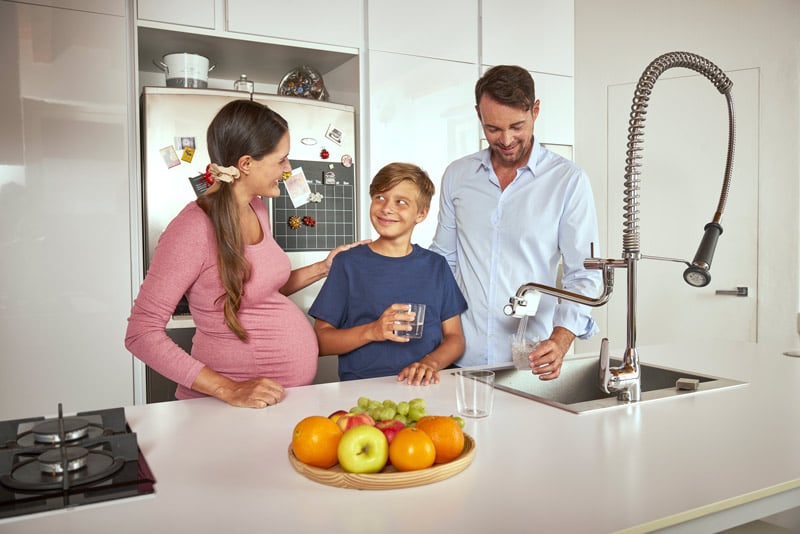
We will never tire of saying it: the water that comes out of our taps at home is drinkable and suitable for use in food. In a word, it is safe. It is continuously monitored by public health authorities has to comply with numerous European directives to ensure that in general it is good quality.
Despite being safe to drink, the water from the tap may contain traces of microplastics, as well as chlorine, pesticides, herbicides, and heavy metals. To further improve the quality of the water which we use for cooking, we can use a filtration system for our taps, an effective way to reduce chlorine, pesticides, herbicides, and to remove bacteria and microplastics from the water. A tap filtration system is easy to install and to use, and provides us with filtered water that always tastes good, straight from your kitchen tap.
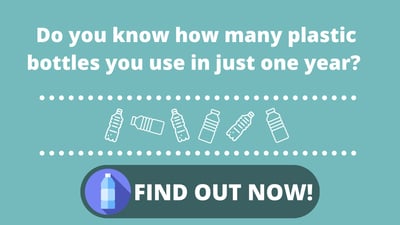
OK, that’s all well and good, but how does this reduce microplastics?
By installing a filtration system, you will always have high quality water available, the flavourful way to quench your thirst! As a result, you will use fewer single-use plastic bottles, which are one of the main sources of microplastics and environmental pollution.
In addition to filters for taps, there are many other products which provide convenient and easy water filtration, such as filter jugs, or, for something a bit more lightweight, filter bottles and filter sports bottles, the last of these are very handy for the gym.
4. Reduce unnecessary use of plastics
We have just seen how, when it comes to water, single-use plastic bottles are one of the leading causes of microplastic pollution in our seas and oceans, since they break up into tiny particles which are scattered into the environment.
But single-use plastics are found everywhere. To reduce their use, keep in mind these small but important actions:
- using cloth plastic bags, instead of plastic bags, when we go to the supermarket
- if we are organising a birthday party for our children, or dinner, use dishes and cutlery made from natural or biodegradable materials. There are many different types of these available and they are easy to find these days.
- using paper or fabric to wrap up presents, rather than plastic-coated materials and transparent film
- did you know that microplastics can also be produced by the washing machine? Choosing to buy fewer but higher quality items of clothing is another action that helps to protect the environment
- avouring shops and retailers that offer unpackaged or loose products for sale, without plastic containers. Places where we can bring our own glass containers
5. Play our own part in efforts to clean up the environment
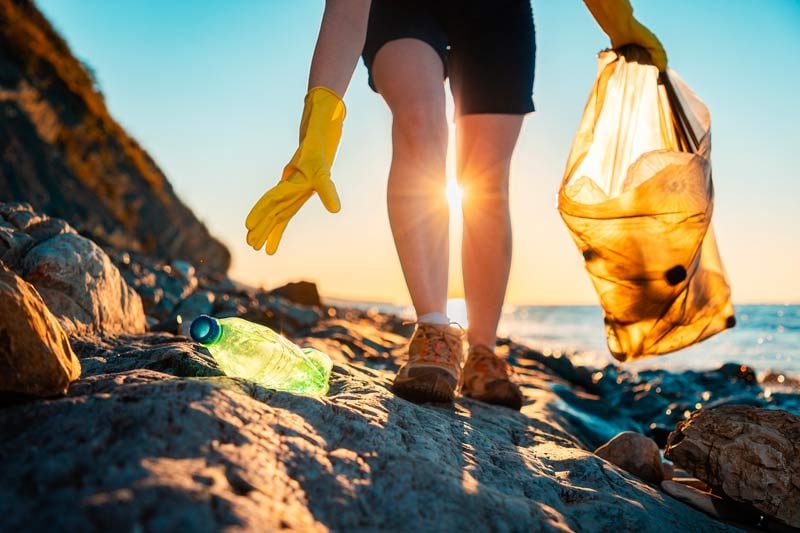
Another everyday action that we can take to reduce microplastics is to separate our waste. Taking the time and effort to correctly separate different materials is something which only takes a few seconds. It takes no effort at all and those few seconds make a critical difference for the plants and animals that live on the same planet as us. And they make a big difference for us as well!
On top of that, something equally simple that can make a difference is to take part in environmental clean-up projects which collect and correctly dispose of plastic waste found on beaches, in parks, rivers, and lakes.
These projects are organised by associations, organisations, schools, or private individuals, with the aim of raising awareness among the population of the issue of plastic pollution and to promote a culture of recycling and respect for the environment.
By taking part in such projects, we can make an active contribution to protecting our planet and benefiting our health and that of other living creatures. And on top of all that, it is an opportunity to socialise, have fun, and learn something new.





It's your turn, leave your comment!
Get the latest from the Laica blog